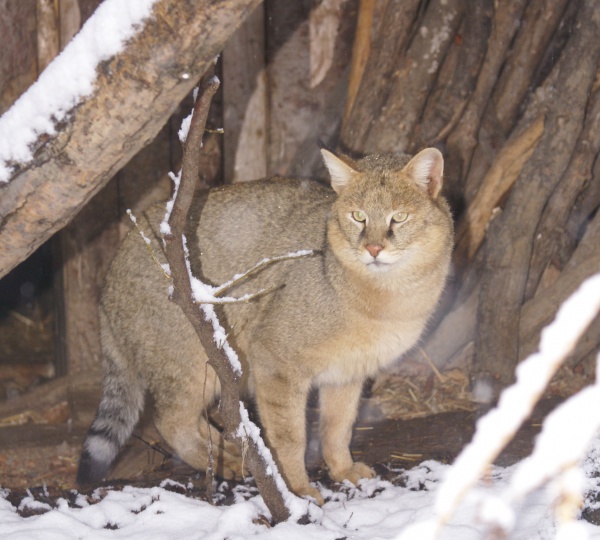Facts About Jungle cat
The jungle cat, also known as the reed cat and swamp cat, is a medium-sized feline native to the Middle East, South and Southeast Asia, and southern China. These cats prefer wetlands, swamps, riversides, and areas with dense vegetation. Although the IUCN Red List categorizes them as Least Concern, they still face significant threats such as wetland destruction, trapping, and poisoning.
This solitary feline sports sandy, reddish-brown, or grey fur without spots, although some individuals can be melanistic (dark) or albino (white). Jungle cats hunt small mammals and birds by stalking and sprinting. They reach sexual maturity at about one year old, with females entering oestrus between January and March. Mating involves males chasing and mounting females, followed by a gestation period of around two months. Kittens start hunting at six months and typically leave their mother after eight or nine months.
Classifying jungle cats has been challenging, with numerous subspecies identified over the years. Recent genetic studies indicate differences among populations in various regions. Jungle cats are the largest members of the Felis genus, distinguished by their long legs and sandy-colored, spot-free coats. They thrive in wetland habitats across their range but avoid cold climates and dense forests.
Their diet primarily consists of small mammals, birds, fish, and insects, with occasional fruit. They are adept hunters, capable of stalking and pouncing on prey, and are also proficient climbers and swimmers. Females give birth to litters of one to five kittens, with males generally not involved in raising them. The species faces threats from habitat loss, hunting, and the illegal skin trade.
Conservation efforts include listing the jungle cat under CITES Appendix II and banning hunting in several countries. However, populations in Southeast Asia have significantly declined due to hunting and habitat destruction, rendering them critically endangered in some areas. Legal protections vary by country, and more efforts are needed to safeguard these cats in the wild.

 Syria
Syria